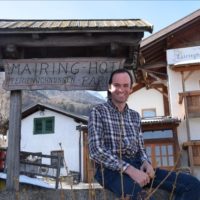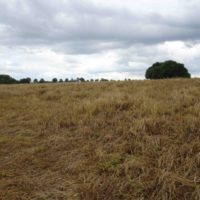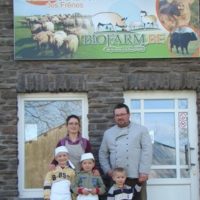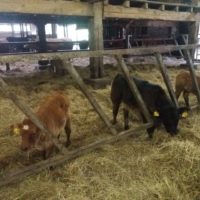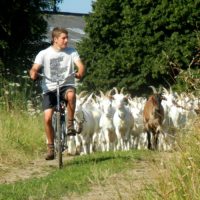Description
The Mairing farm is located at 1,450 m altitude in the Venosta Valley (South Tyrol, Italy) and has been managed by Harald Paris since 2003. Right after taking over the cattle farm, vegetable production was introduced as an additional mainstay. Since 2010, the vegetables (approx. 4000 m²) are organically produced. One year later also the dairy production was converted to organic farming. A Farm Holidays activity is the third mainstay of the farm.
On the 6.7 ha grassland area, 9 dairy cows and 2-3 young cattle are kept on average. The cows graze from May to mid-October on the contiguous grazing areas close to the farm buildings. In summer, the animals graze on the nearby woodland pasture (1.1 ha), which is also used at night on the hottest days. In addition to grazing, the grassland areas are also mown twice a year. Due to the high forage quality, only a small amount of cereal mixture is provided to the animals. In order to give the cows access to open-air areas during the winter months, a staircase has been built in the original tie stall, enabling the cows to reach the open-air area located behind the stall.
A prerequisite for the operation of the farm is the cooperation of the family, as the three different mainstays result in a high work intensity. The operational prerequisites for the implementation of pasture farming are the availability of areas close to the farm that are not too steep and to learn how to handle the animals on the pasture. Regular overseeding is important in order to promote and maintain a dense sward. For the future of the farm there is already a concrete plan to convert the tie stall into a loose housing, as the farm holiday guests often criticize it.
Weidemanagement mit Milchkühen Auslauf mit Kuhtreppe
Der auf 1.450 m gelegene Mairinghof wird von Harald Paris seit 2003 geführt. Gleich zu Beginn der Übernahme des reinen Viehwirtschaftsbetriebs wurde als zusätzliches Standbein die Gemüseproduktion eingeführt. Seit 2010 wird der Gemüseanbau (ca. 4000 m²) biologisch betrieben, ein Jahr später wurde auch die Milchwirtschaft auf die biologische Bewirtschaftungsweise umgestellt. Urlaub auf dem Bauernhof bildet das dritte Standbein des landwirtschaftlichen Betriebes.
Auf den 6,7 ha großen Grünlandflächen werden im Durchschnitt 9 Milchkühe und 2-3 Jungrinder gehalten. Auf den arrondierten Flächen können die Kühe von Mai bis Mitte Oktober weiden. Im Sommer grasen die Tiere auf der nahegelegenen Waldweide (1,1 ha), welche an den heißesten Tagen auch nachts genutzt wird. Auf den Mähweiden erfolgen pro Jahr neben dem Weidegang auch zwei Schnittnutzungen. Durch die hohe Grundfutterqualität ist nur eine geringe Zufütterung einer Getreidemischung notwendig. Um den Kühen auch in den Wintermonaten die Möglichkeit des Auslaufs gewähren zu können, wurde der Anbindestall mit einer Kuhtreppe ergänzt, welche es den Kühen ermöglicht, die höher gelegene Auslauffläche zu erreichen.
Voraussetzung für das Funktionieren des Betriebes ist die Mitarbeit der Familie, denn aufgrund der drei verschiedenen Standbeine ergibt sich eine hohe Arbeitsintensität. Die betrieblichen Voraussetzungen für die Umsetzung der Weidehaltung sind die Verfügbarkeit von hofnahen, nicht zu steilen Flächen und das Erlernen des Umgangs mit den Tieren auf der Weide. Eine regelmäßige Nachsaat ist wichtig, um eine dichte Grasnarbe zu fördern und zu erhalten. Für die Zukunft des Betriebes besteht bereits der konkrete Plan den Anbinde- in einen Laufstall umzubauen, da v.a. die Gäste diesen meist als negativ erachten.

